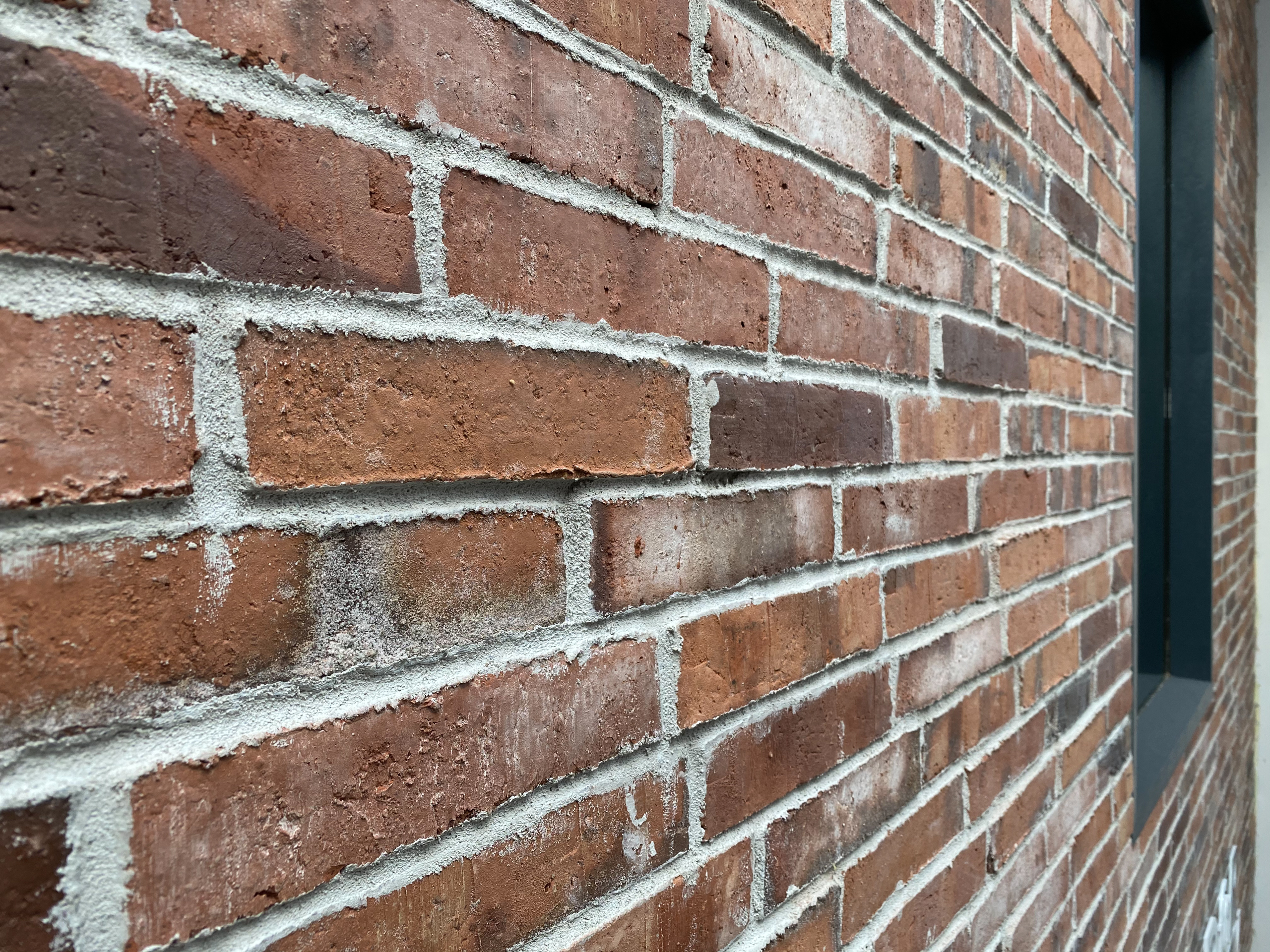
Clinker brick slips
from the ring kiln
The flat alternative to facing bricks
Properties and quality of the brick slip
for the EIFS (External Thermal Insulation Composite System)
Brick slips are ceramic plates that are glued onto a heat-insulated facade. They are usually only about 15mm thick, but we can also provide them in various thicknesses.
With professional processing, it is hardly possible to see a difference between a facade with brick slips and a building with a cavity wall.
On this page and on the subject…
Advantages of brick slips
Another advantage is, you make a one-time investment and receive a beautiful facade for decades. With topcoat, you have to assume it needs to be treated or cleaned after a few years.
Brick slips are low-maintenance, have a long lifespan, high resistance, and very low absorbency, resulting in increased frost resistance.
Another positive feature is the colour resistance of bricks does not decrease over the years.
If you have any questions about our products...
Split slips
Brick slips in a double pack


we present:
selected
brick split slip products
Cut slips
We also offer cut slips from all ring kiln clinker bricks
We offer cut brick slips as standard slips, but also as heads, for example, for a block, cross, Gothic, or random masonry bond.

Clinker brick slip
accessories
Corner slips & angle slips
for the perfect brick look
Corner slips are used on external corners and reveals. They protect these areas, and enhance the aesthetics by reducing the number of joints.
A corner slip has a long leg side and a short leg side. The short leg side usually has a width of 11.5 cm.

Runner shells
The ideal finish for the window lintel

Shaped brick slips
For the exceptional case
Clinker brick slip
formats
Variety is the program
Corner slips are offered for all formats and sortings.
If your desired product is not available, please feel free to contact us.
Formats
NF
DF
RF
LF
LDF
Dimensions
240 x 15 x 71
240 x 15 x 52
240 x 15 x 62
290 x 15 x 40
290 x 15 x 52
Surface slips per sqm
48
62
54
66
55
Corner slips per running meter
12
16
14
19
16
Runner shells per running meter
4
4
4
4
4
Notes on ordering brick slips
Corner or angle slips can be used in conjunction. This completes the look of the brick facade.
More sustainable
production
through resource conservation
and upcycling.
The webs required for the stability of the blanks are collected during separation and used as bulk material for, e.g., path design.
Technical Data
Requirements for brick slips
by the EIFS (External Thermal Insulation Composite System)
- Slips, tiles, or panels according to DIN EN 14411 and unglazed brick and brick slips in accordance with DIN 105-100 may be used.
- They must be frost-resistant according to DIN EN ISO 10545-12 or DIN 52252-1.
- The individual ceramic cladding must not exceed the area of 0.12m² and the edge length of 0.4m.
- The thickness is limited to 15mm plus tolerance 2-3 mm.
- The frequency distribution of the pore sizes must have a maximum at pore radii of >0.2µm.
- The water absorption according to DIN EN ISO 10545-3 of the ceramic cladding must not exceed 6% (higher values are allowed for some EIFS systems).
- Dark/black brick slips may only be used with the approval of the EIFS manufacturer.
Gillrath brick slips are certified
for all known & common external thermal insulation composite systems
Test certificates prove the water absorption of the slips is mostly below 3%.
We are happy to provide corresponding CE marks/performance declarations of your desired product upon request.
How to make the most of our brick slips
Better fire protection through brick slips
The fire-resistant cladding for the EIFS
Brick slips provide significantly better protection for the external thermal insulation composite system than a normal plaster.
A brick slip possesses the same positive properties as those of fired clinker bricks.
Ceramic is absolutely fire-resistant. Each brick slip has already been exposed to fire at 1,100 degrees Celsius (2,012 degrees Fahrenheit).
Therefore, the burning of brick slips is impossible.
Unlike in the case of special thermal insulation boards with a rear ventilation system, where a chimney effect can occur in the event of a fire, this is not possible for walls with full insulation and applied brick slips.




